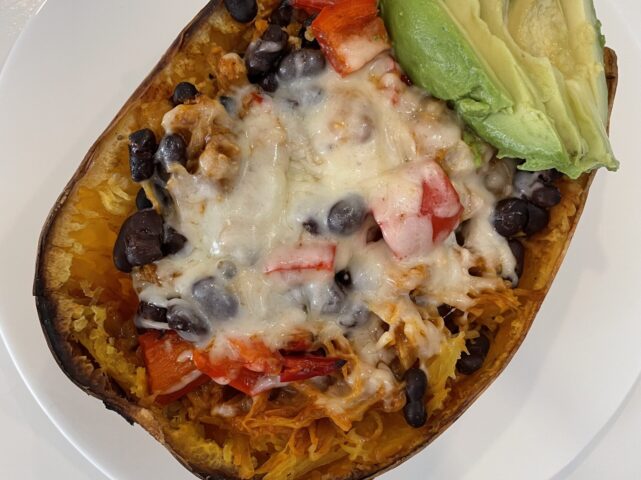Have you ever wondered what controls how much insulin is released after we eat? You may have heard of GLP-1 (or more formally known as Glucagon-Like Peptide-1). This is the main hormone targeted in the popular weight-loss drugs Wegovy and Ozempic. GLP-1 has a lesser-known partner, called Gastric Inhibitory Polypeptide, or GIP.
GLP-1 and GIP are hormones that belong to the “incretin” family. This means that they stimulate insulin and regulate blood sugar levels in the body after a meal. In this blog, we will talk more about the similarities and differences between these two hormones.
Incretins
Incretins are a family of hormones that are released from the intestines after a meal to stimulate insulin release from the pancreas. After a meal, GLP-1 and GIP travel from the small and large intestines to the beta cells on the pancreas to release insulin. Insulin then travels through the bloodstream to let glucose into cells throughout the body and be used for energy.
Glucagon-Like Peptide-1 (GLP-1)
GLP-1 is released from the beginning of the large intestine and colon while you eat. It goes straight to the pancreas to stimulate insulin secretion. It also travels to the brain to inhibit your appetite and food intake. In the stomach, it slows the emptying process to make you feel full1.
GLP-1 also inhibits the hormone, glucagon, from being released1. Glucagon is released from the pancreas and acts like the “off-duty” insulin. It tells the liver to release stored glucose into the blood to keep us energized in between meals when blood sugar can dip.
However, in people with Type 2 Diabetes (T2D), GLP-1 production is reduced. This means that insulin production is low, and the individual might not experience feelings of fullness after meals2. They might also have trouble regulating their blood sugar in-between meals.
GLP-1 agonists, like Ozempic or Wegovy, work to mimic the way GLP-1 works. In people who have reduced GLP-1 production, these medications can serve as a placeholder for the hormone so the body can return to normal function.
Gastric Inhibitory Peptide (GIP)
GIP hormone is released from cells at the beginning of the small intestine after a meal. Like GLP-1, GIP stimulates the release of insulin by acting directly on the pancreas. Interestingly, GIP prevents the death of the pancreatic cells that produce insulin. So, more GIP means more cells that produce insulin.
GIP also increases the release of glucagon regardless of the level of glucose in the blood, unlike GLP-11. This is one reason why it is not a targeted hormone to treat T2D while GLP-1 is.
High-fat diets strongly enhance GIP secretion1. It has been known that overnutrition is associated with increased adipose tissue. Now, researchers have identified that genetically modified mice without the receptor for GIP in their adipose tissue did not gain weight on a high-fat diet3.
GIP levels in people with T2D is enhanced, but researchers don’t know why1. More research is needed to understand the pathways causing this phenomenon.
Working Together
GLP-1 and GIP don’t just target the pancreas. They also interact with cells in bones, adipose tissue, and the brain. The diagram below shows the intricate pathways GIP and GLP-1 take in the body.

Source: GIP and GLP‐1, the two incretin hormones: Similarities and differences
Conclusion
In conclusion, GLP-1 and GIP are important hormones in the insulin-production pathway. Both hormones stimulate insulin after a meal, but only GLP-1 is a targeted treatment for T2D because of its effects on the brain and satiation.
If you’re interested in learning more about GLP-1 and GIP, feel free to make an appointment with one of our qualified dietitians.
Words to know:
- Apoptosis: programmed cell death
- B-cell: insulin producing pancreatic cells
- Glucagon: hormone that releases stored glucose in-between meals
- Adipose tissue: body fat tissue
Sources:
- Seino Y, Fukushima M, Yabe D. GIP and GLP-1, the two incretin hormones: Similarities and differences. J Diabetes Investig. 2010;1(1-2):8-23. doi:10.1111/j.2040-1124.2010.00022.x
- Collins L, Costello RA. Glucagon-Like Peptide-1 Receptor Agonists. [Updated 2024 Feb 29]. In: StatPearls [Internet]. Treasure Island (FL): StatPearls Publishing; 2025 Jan-. Available from: https://www.ncbi.nlm.nih.gov/books/NBK551568/
- Gault VA, McClean PL, Cassidy RS, Irwin N, Flatt PR. Chemical gastric inhibitory polypeptide receptor antagonism protects against obesity, insulin resistance, glucose intolerance and associated disturbances in mice fed high-fat and cafeteria diets. Diabetologia. 2007;50(8):1752-1762. doi:10.1007/s00125-007-0710-4







